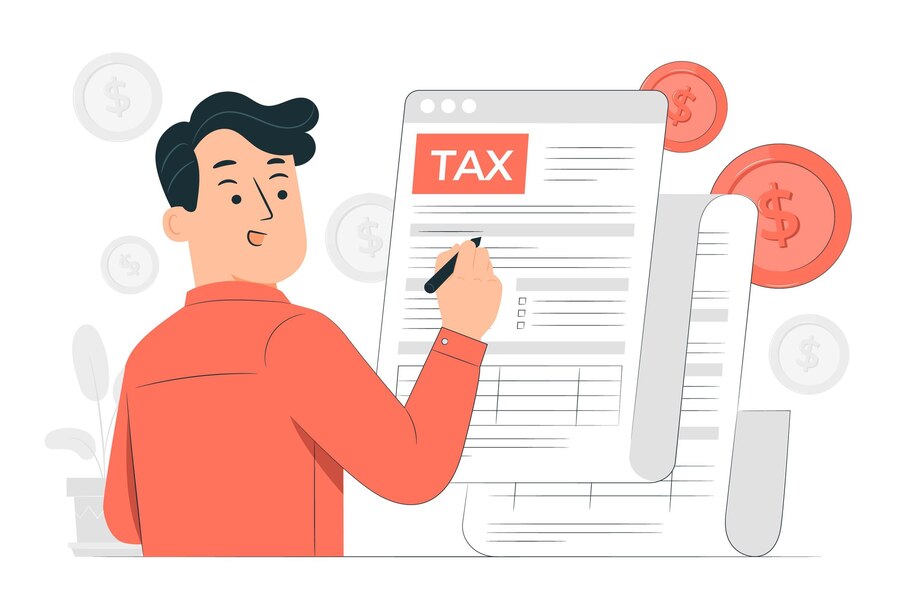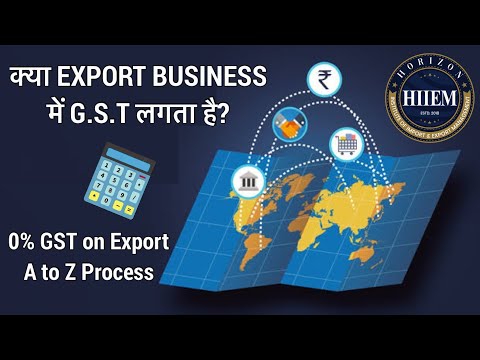Key Takeaways
- Input Tax Credit (ITC): Exporters can claim back the GST paid on inputs used in producing exported goods, effectively reducing the cost of production and enabling more competitive pricing in foreign markets.
- Documentation and Compliance: Exporters must comply with specific documentation and procedural requirements, such as submitting a Letter of Undertaking (LUT) and maintaining accurate transaction records, to benefit from GST exemptions and credits.
- Benefits for Exporters: The GST exemptions on exports offer cost reductions, improved cash flow, and avoidance of the GST refund process, contributing to better pricing strategies and enhanced market competitiveness.
- Economic Impact: The GST framework supports economic growth by making exports more competitive, leading to increased foreign exchange earnings, job creation, and market diversification.
The GST in various countries was a ground-breaking change in how goods and services are taxed; it is an attempt to simplify the tax structure and make it homogenous overall. Particularly for exporters, learning the GST intricacies is very important because it determines the price and its competitiveness in the international market.
The article gives deep insights into the world of purchasing goods that are exempt from GST when exported, with a focus on the legal framework, advantages, and procedural aspects of excelling in GST-based trade operations.
GST and Exports
GST, a comprehensive, multi-stage, destination-based tax, encompasses all aspects of the supply chain from manufacture to final human consumption. For exporters, the critical component to remember is how GST affects goods destined for international marketplaces and the mechanisms in place to prevent it from becoming an undue burden.
- Nature: GST is a value-added tax, which means it is imposed on the value added to goods and services at each stage of the supply chain, from production to the point of sale.
- Objective: The primary goal of GST is to consolidate multiple indirect tax levies into a single tax, thereby simplifying the payment of tax structure and increasing compliance.
- Implementation: Many countries have adopted GST or similar value-added tax systems, each with its own rates, rules, and regulations.

Components of GST
GST may be composed of several components, depending on the country’s implementation:
- CGST (Central Goods and Services Tax Act): Levied by the central government on intra-state sales (within the same state).
- SGST (State Goods and Services Tax): Levied by the state governments on intra-state sales.
- IGST (Integrated Goods and Services Tax): Levied by the central government on inter-state supplies or sales (between two states) and imports.
- UTGST (Union Territory GST): Levied on transactions within a Union Territory in some countries.
Strategic use of GST exemptions and zero-rated supplies makes exporters much more competitive and profitable. Strict compliance and the use of online GST portals for simple tax management and filing make this easier.
Importance of export in the economy
Trade is important for the growth and stability of a country’s economy. They contribute to the economic prosperity of nations by expanding markets, creating jobs, enhancing competitiveness, and fostering innovation.
- Economic Growth: Trade is a primary source of foreign exchange earnings for countries, enabling them to buy the imports needed for various sectors. By selling goods and services to other countries, nations can increase their economic output and growth. Higher trade volumes can lead to a higher Gross Domestic Product (GDP).
- Balance of Trade: Exports help balance a country’s trade. A country that trades more than it imports will have a trade surplus, which contributes positively to its balance of payments. On the other hand, countries that import more than they export face trade deficits, which can be problematic.
- Job Creation: The export sector is a significant source of employment. By accessing larger markets outside their own borders, businesses can increase production to meet foreign demand, thereby creating more jobs domestically. This is especially true in manufacturing, agriculture, and high-tech industries.
- Market Diversification: Exports allow companies to diversify their markets, reducing their dependence on domestic sales alone. This can be particularly beneficial during times of domestic economic downturns, as companies with a diversified market base are likely to be more resilient.
- Competitiveness and Innovation: Engaging in international trade compels companies to become more competitive and innovative to meet the diverse demands and standards of global markets. This can lead to improvements in product quality, cost efficiency, and technological advancement.
- Utilization of Comparative Advantage: Trade businesses enable countries to specialize in the production of goods and services for which they have a comparative advantage, meaning they can produce more efficiently than other countries. This specialization leads to a more efficient global allocation of resources, enhancing overall economic welfare.
- Foreign Exchange Earnings: Export activities bring in valuable foreign exchange that countries can use to pay for their imports—such as machinery, raw materials not available domestically, and other goods and services necessary for the economy.
- Cultural Exchange: Through exports, countries also exchange cultural products and values, which can enhance mutual understanding and foster better international relationships.
Benefits of Purchasing Goods Without GST for Export
Purchasing goods without the Goods and Services Tax (GST) for the purpose of export offers several benefits, primarily contributing to cost reduction and increasing competitiveness in the global market. Here’s how these benefits unfold:
Cost Reduction
- Lower Purchase Costs
When goods are purchased without GST for export purposes, the initial cost of acquisition for these goods is lower. This is because the tax component, which can be significant, is not added to the cost base of these goods.
Lower purchase costs directly reduce the cost of goods sold, enhancing the profit margin for exporters.
- Improved Cash Flow
By not having to pay GST at the point of purchase, businesses can improve their cash flow management. This is particularly important for exporters who operate on tight margins and may have significant amounts of capital tied up in inventory or awaiting GST refunds on inputs.
Improved cash flow allows for more flexibility in operations and investment in growth opportunities.
- Avoidance of the Refund Process
Typically, exporters can claim refunds for the GST paid on inputs used to produce exported goods. However, this process can be time-consuming and might temporarily tie up capital.
Purchasing goods without GST sidesteps this process, allowing businesses to allocate resources more efficiently without waiting for refund claims to be processed.
Increased Competitiveness
- Lower Export Prices
The reduction in purchase and production costs achieved by not paying GST on inputs allows exporters to price their products more competitively in the international market.
This can be a crucial factor in price-sensitive markets, where even small price differences can affect market share and competitiveness.
- Enhanced Market Positioning
Exporters can position their products more favorably in foreign markets thanks to competitive pricing and GST-free purchases.
This can lead to increased demand, higher sales volumes, and the ability to enter or expand in markets that were previously difficult to penetrate due to cost considerations.
- Flexibility in Pricing Strategies
The cost advantage gained through GST-free purchases provides exporters with greater flexibility in their pricing strategies.
They can choose to pass on the cost benefits to customers to drive sales volume or maintain their prices to improve profit margins. This flexibility is vital in responding to changing market conditions and competitive dynamics.
- Compliance and Simplification
For businesses engaged in exports, navigating tax regulations can be complex. Purchasing goods without GST simplifies the tax compliance process, reducing administrative burdens and allowing businesses to focus more on their core activities and market development strategies.
Legal Framework

The legal framework surrounding GST (Goods and Services Tax) and exports is designed to ensure that exports are globally competitive and not burdened by domestic taxes.
This structure includes specific provisions regarding the treatment of exports, documentation requirements, and compliance obligations. Here’s an overview of these aspects:
GST Laws Regarding Exports
- Zero-Rated Supplies
Most GST frameworks classify exports as zero-rated supplies. This means that goods or services exported are taxed at a rate of 0%, ensuring that exports are free of domestic GST.
The rationale is to make sure that the tax does not become an export cost, thereby making goods and services more competitive on the international stage.
- Input Tax Credit (ITC) for Exporters
Exporters are allowed to claim a refund of the GST paid on inputs (goods and services) used to make the exported products. This provision ensures that the tax on inputs does not add to the cost of exported goods, aligning with the principle that taxes should not be exported.
- LUT/Bond
Exporters may be required to furnish a Letter of Undertaking (LUT) or a bond in some jurisdictions. This is a commitment that they will comply with all GST regulations related to exports and is meant to facilitate the export without the payment of GST under bond or LUT, with the eligibility to claim refunds on input tax credits.
Documentation and Compliance
Export Documentation: The legal framework mandates comprehensive documentation to facilitate exports under GST. This typically includes:
- Tax Invoice: A crucial document that details the goods or services being exported, including the value and the GST rate applied (zero in the case of exports).
- Shipping Bill/Bill of Lading: Documentation that accompanies goods shipped overseas, serving as a contract between the owner of the goods and the carrier.
- Letter of Undertaking (LUT) or Bond: Where required, to allow for the export of goods or services without the payment of GST.
Compliance Requirements
- GST Returns: Exporters must file regular GST returns, detailing their sales, exports, and input tax credit claims. This includes furnishing details of exports and the taxes paid on inputs to claim refunds.
- Refund Claims: For the input tax credit on exports, specific procedures must be followed to claim refunds. The GST regulations stipulate that this process requires thorough documentation and adherence to deadlines.
- Record-keeping: According to GST laws, exporters must keep track of all transactions, tax invoices, and compliance documents for a certain amount of time. This is crucial for audit and verification purposes by tax authorities.

Regulatory Updates and Compliance
GST laws and regulations regarding exports can be subject to updates and changes. Exporters must stay informed about any regulatory changes to ensure ongoing compliance and to take advantage of any new provisions or simplifications in the tax framework.
Zero-Rated Supply
A zero-rated supply in the context of Goods and Services Tax (GST) refers to goods or services that are taxed at a rate of 0%. While GST is technically applied to these supplies, no actual tax is collected from the purchaser.
The primary aim of zero-rating certain supplies, especially exports, is to make the products more competitive in international markets by not adding the tax burden to the final price and to avoid the cascading effect of taxes.
- Tax Implications: Even though zero-rated supplies are taxable, the effective tax rate is 0%. This allows businesses to claim credits for the GST paid on inputs used to make these supplies, effectively reducing the cost of production and/or services.
- Scope: Zero-rated supplies commonly include exported goods and services, certain food items, books, and other essentials, varying by jurisdiction. The rationale is to support businesses in competitive international markets and ensure the affordability of essential goods domestically.
- Benefits to Businesses: For businesses, making zero-rated supplies means they can recover the GST paid on inputs, which can significantly reduce their operational costs. This mechanism ensures that taxes paid on inputs are refunded or credited back, preventing the tax burden from accumulating through the supply chain.
How to Qualify for Zero-Rated Supply
- Understand the Legal Provisions: The first step is to understand the specific provisions of the GST law in your jurisdiction that define what qualifies as a zero-rated supply. This typically includes exports and may include other goods and services deemed essential.
- Documentation and Registration: Businesses must be registered under the GST regime to make zero-rated supplies and to claim input tax credits. Proper documentation, including tax invoices, shipping documents for exports, and other relevant paperwork, must be maintained.
- Compliance with Export Procedures: For exports, businesses must comply with the prescribed export procedures, which may include submitting specific forms or declarations, to qualify their goods or services as zero-rated supplies. This might involve providing evidence that the goods have been exported, such as shipping documentation or export invoices.
- Claiming Input Tax Credit: To benefit from zero-rating, businesses must track and record the GST paid on inputs used to produce the zero-rated supplies. They must then claim these input tax credits in their GST filings, according to the procedures set out in the GST legislation.
- Fulfilling Specific Requirements: Depending on the jurisdiction, there might be additional requirements to qualify for zero-rated supplies. For example, in some cases, businesses may need to apply for permission or submit a Letter of Undertaking (LUT) to the tax authorities, especially for exports.
- Ongoing Compliance: Regular GST returns must be filed, detailing zero-rated supplies made and the input tax credits claimed. Businesses must keep up with any changes in legislation or compliance requirements to ensure that they continue to qualify for zero-rated supplies.
GST Exemption for Exporters
GST (Goods and Services Tax) exemption for exporters is a critical component of the tax framework designed to enhance the competitiveness of goods and services in the international market.
This exemption ensures that products can be exported without the added burden of domestic taxes, making them more price-competitive globally. Below, we outline the criteria for obtaining a GST exemption for exporters and the process for applying for this exemption.

Criteria for GST Exemption for Exporters
- Export Nature: The goods or services must be intended for export out of the country. This is the fundamental criterion that defines eligibility for GST exemption. The definition of exports in terms of GST generally includes the supply of goods and services to a location outside the domestic tariff area.
- Registration and Compliance: Exporters must be registered under the GST regime in their respective country. Despite the exemption on exported goods or services, exporters need to comply with the GST laws, including filing of returns and other procedural mandates.
- Documentation for Exports: Exporters are required to furnish proper documentation proving that the goods or services are destined for foreign markets. This includes shipping bills, export invoices, and other relevant customs documentation.
- Payment in Convertible Foreign Exchange: Often, to qualify for GST exemptions, the payment for exported goods or services must be received in convertible foreign exchange or in accordance with the foreign exchange policy of the country. This criterion ensures that the benefits of GST exemptions are accorded to genuine exports.
Applying for GST Exemption for Exporters
| Legal Provisions: Exporters should first acquaint themselves with the specific legal provisions related to GST exemptions for exports within their jurisdiction. This includes eligibility criteria, required documentation, and the application process. |
| GST Registration: If not already registered, exporters must register under the GST. This is a prerequisite for applying for any exemptions or making zero-rated supplies. |
| Submission of a Letter of Undertaking (LUT): In many jurisdictions, exporters can apply for GST exemptions by submitting a Letter of Undertaking (LUT) to the tax authorities. The LUT is a declaration that the exporter will comply with all the GST regulations related to exports and is a commitment to export without the payment of tax. |
| Gather and Submit Required Documents: As part of the application process, gather all necessary documentation, including business registration details, details of the export goods or services, and proof of export capability. The specific requirements can vary, so it’s crucial to consult the latest guidelines from the tax authority. |
| Online Application: Many tax authorities allow or require the submission of LUTs and other GST exemption applications through online portals. Exporters need to navigate these digital platforms to submit their applications and track their status. |
| Compliance and Reporting: Even after receiving the GST exemption, exporters must maintain compliance with all GST laws, including accurate and timely reporting of exports and any other required information in their GST returns. |
Input Tax Credit (ITC)
Input Tax Credit (ITC) is a mechanism in the Goods and Services Tax (GST) structure that allows businesses to reduce the taxes they pay on inputs (goods and services used in the production process) from the taxes they are supposed to pay on their output (final product).
This was created to avoid the cascading effect of taxes, where tax is paid on tax, making goods and services more expensive.
- Mechanism: ITC enables businesses to claim credit for the GST paid on their purchases, inputs, and input services that are used for business purposes. This means that if a business has paid GST on inputs, it can deduct the amount of GST paid from its liability on output GST. The concept ensures that tax is only paid on the value addition at each stage of the supply chain, making the entire process more tax-efficient.
- Eligibility: To be eligible for ITC, businesses must be registered under GST and must possess valid documentation (such as tax invoices) for the inputs or services for which they are claiming the credit. Additionally, the goods and services purchased must be used exclusively for the purpose of the business.
Conditions for Claiming ITC: Several conditions must be met to claim ITC, including timely receipt of goods or services, possession of a tax invoice or debit note, payment of the invoice within a specified period, and the supplier’s compliance in filing their GST returns.
Claiming ITC on Exports
Exports are treated as zero-rated supplies under the GST regime, meaning exporters can export goods or services without GST or claim a refund for the tax paid on inputs used to manufacture these exported goods or services. Here’s how ITC plays a role in exports:
- Zero-rated Supply Benefit: Since exports are zero-rated, exporters can claim a full refund of ITC on the GST paid on inputs used for producing the exported goods or services. This significantly reduces the cost of production for exporters and enhances their competitiveness in international markets.
- Refund of ITC for Exports: Exporters have two options for claiming ITC in the context of exports. They can supply goods or services under a bond or Letter of Undertaking (LUT) without paying GST and then claim a refund of the ITC, or they can pay GST on exports and claim a refund of the GST paid. The refund process is streamlined to support Indian exporters, ensuring that their working capital is not tied up in tax payments.
- Documentation and Compliance: To claim ITC or a refund on exports, exporters must ensure proper documentation, including shipping bills, tax invoices, and proof of export. Compliance with GST filing requirements is also crucial, as details of exports and input credits need to be accurately reported in GST returns.
- Procedure for Claiming Refund: The process involves filing an application for a refund of ITC on the GST portal, along with the necessary documents. The refund claim must be made within the time frame specified in the GST law, usually within two years from the date of export.
Documentation and Compliance
For businesses engaging in GST-free purchases, especially for export purposes, adhering to documentation and compliance requirements is crucial. This ensures smooth operations, eligibility for tax benefits, and adherence to regulatory mandates.

- Tax Invoice: A valid tax invoice from the supplier is crucial. The GST law stipulates that it must include certain mandatory information, such as the goods or services purchased, the GST rate applied (indicating whether the supply is GST-free), and other specifics.
- Purchase Orders: Documentation of purchase orders issued for GST-free goods or services, indicating the nature of the goods or services and the purpose of their use (specifically if they are intended for export).
- Shipping Documents: For goods that are purchased for export purposes, shipping documents such as bills of lading, airway bills, or export documentation are necessary to prove that the goods are destined for markets outside the country.
- Letter of Undertaking (LUT): Businesses engaged in exporting goods or services GST-free may need to furnish an LUT to the tax authorities, declaring their intention to export goods or services without payment of GST.
- Export Contracts or Agreements: Copies of contracts or agreements with overseas buyers that specify the nature of the goods or services to be exported. These documents support the claim that the purchases are intended for export.
- Proof of Payment: Evidence of payment for these purchases, especially if the payment is made in convertible foreign exchange, can be required for certain goods or services to qualify as GST-free for export purposes.
- GST Registration and Details: Businesses must have a valid GST registration, and documents related to GST registration should be kept readily available.
Compliance Checklist
- GST Registration: Ensure that your business is registered under GST on the GST portal and has a valid GSTIN (GST Identification Number).
- Accurate Record-Keeping: Maintain accurate and detailed records of all GST-free purchases, including invoices, contracts, LUTs, and payment proofs. The GST law specifies a time frame for keeping these records, typically between five and seven years.
- Timely Filing of Returns: Submit GST returns on time, detailing all transactions, including GST-free purchases and exports. Ensure accurate reporting of input tax credits and zero-rated supplies.
- Reconciliation of Purchases: Regularly reconcile purchase records with GST filings and bank statements to ensure the accuracy and completeness of the documented transactions.
- Compliance with Export Procedures: Adhere to the prescribed export procedures, including the timely submission of export documentation and proof of export on the GST portal within the stipulated time frames, to qualify for GST exemptions or refunds.
- Audits and Compliance Checks: Be ready for GST audits or compliance checks by tax authorities. Ensure all documentation is readily available for verification.
- Update Business Processes: Regularly review and update your business processes and systems to comply with changes in GST laws and regulations, especially those pertaining to GST-free purchases and exports.
Conclusion
The GST structure has the potential to be an attractive aspect for exporters, as it provides zero-rated supplies and uses GST and online portals strategically to enhance profitability and competitiveness in global trade.
Following the rules of the Central Goods and Services Tax Act (CGST) and the Integrated Goods and Services Tax (IGST) is easier when forms and other tools for compliance are available on these portals. This makes it easier to manage tax obligations and makes transactions go more smoothly.
This approach is a streamlined one that has been duly supported by file and document maintenance, and also has compliance with filing requirements. This approach also not only optimizes the operating of exporters within the GST regime but also strengthens their market position and their own finances, all of which are part of the wider export business sector’s participation.
💡Ready to streamline your GST payments for peace of mind and compliance? Access Pice and pay your GST payment efficiently and on time.
FAQs
What is GST, and how does it apply to exports?
GST, or Goods and Services Tax, is a comprehensive, value-added tax levied on the manufacture, sale, and consumption of goods and services within a country. When it comes to exports, GST is applied as a zero-rated supply. This means exporters can export goods and services without paying GST on them or claim a refund for the tax paid on inputs used to produce these goods and services, thereby ensuring that exports are competitive in the global market.
Who is eligible to purchase goods without GST for export?
In the context of GST regulations, exporters who are registered under GST and undertake exports of goods can purchase goods without paying GST. This is facilitated through the mechanism of a Letter of Undertaking (LUT) or a bond, which allows them to procure goods or services intended for export without the burden of GST at the time of purchase, with the condition that the goods will be exported. This provision is aimed at enhancing the competitiveness of exporters by reducing their upfront costs.
What documentation is required for purchasing goods without GST for exports?
To purchase goods without GST for export, exporters need to submit a Letter of Undertaking (LUT) or a bond in the prescribed format to the GST authorities. This documentation is required to prove their intention to export the goods within the stipulated time frame. Additionally, exporters must maintain records of invoices and shipping documents that evidence the export of goods, ensuring compliance and eligibility for the GST exemption or refunds on inputs used.
How can businesses claim GST credits on purchases intended for export?
Businesses can claim GST credits on purchases intended for export by exporting the goods or services under a bond or Letter of Undertaking (LUT) without paying GST, and then filing for a refund of the Input Tax Credit (ITC) on their GST returns. The ITC claim is based on the inputs, input services, and capital goods used to produce the exported goods or services. Proper documentation, including tax invoices and proof of export, is essential to support the claim and facilitate the refund process.
What are the penalties for non-compliance in purchasing goods without GST for export?
Non-compliance in purchasing goods without GST for export, such as failing to export the goods within the stipulated time or not maintaining proper documentation, can result in severe penalties. These penalties may include the revocation of the GST exemption, a demand for the payment of the GST that was initially waived, along with interest, and fines. The specific penalties can vary based on the nature and extent of the non-compliance under the GST regulatory framework.
Can foreign businesses purchase goods without GST for export from another country?
Yes, foreign businesses can purchase goods without GST for export from another country if they comply with that country’s GST or VAT export regulations. Typically, this involves collaborating with local exporters who are registered under the GST framework and can supply goods under a bond or Letter of Undertaking (LUT), ensuring the goods are exported without the levy of GST. The process and documentation required may vary, reflecting each country’s specific tax laws and export procedures.








